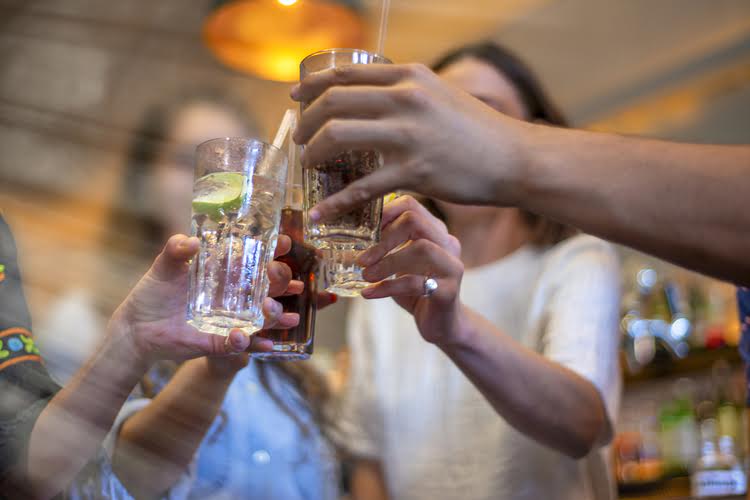And bathing our neurons in alcohol – which is known to release inhibition – may only amplify this thrill chasing. For particularly impetuous teenagers, alcohol can create a vicious cycle of bad behaviour and delinquency. “The more impulsive kids tend to drink more, and then drinking causes more impulsivity,” says Squeglia. According to the Centers for Disease Control and Prevention (CDC), alcohol is the most commonly used substance among young people in the US. As with adults, teens can develop unhealthy relationships with substances, including alcohol. Regular or heavy drinking is not typical for adolescents and is harmful.
Social, academic, and legal issues:
Updates regarding government operating status and resumption of normal operations can be found at opm.gov. From the myth of Europeans’ “healthy drinking culture” to the surprising harm of some common family traditions, science is overturning old beliefs around alcohol and young people. It can happen in any family, regardless of income, status, or ethnicity. Many parents are surprised to learn that underage drinking can start earlier than the teenage years.
For more information on alcohol and the brain, visit the Alcohol and the Brain topic page.
- Alcohol abuse during adolescence often leads to dependency issues in adulthood.
- Drugs also cause a dopamine release; however, a drug-related dopamine release is more intense than one derived from a more natural experience.
- Your child needs to know you take this issue seriously and will set firm limits to protect them.
- Teenagers make up a large portion of the population in the United States.
- These changes can then negatively impact school or work, as well as relationships with family members and loved ones.
This portrayal can downplay the risks and lead to misconceptions about the acceptability and safety of underage drinking. This pressure can be particularly intense in environments where underage drinking is common and seen as a norm, as noted by the American Academy of Pediatrics. Adolescence is a critical period for brain development, and alcohol can have lasting negative effects. Understanding the scope of teen alcoholism is the first step in combating it. Alcoholism poses significant risks to teens’ physical, emotional, and social well-being. This pervasive problem demands attention not only because of its immediate impact but also due to its potential long-term consequences.
Underage drinking consequences
Teenagers in Tennessee are 6.84% less likely to have used drugs in the last month than the average American teen. Teenagers in South Dakota are 24.31% less likely to have used drugs in the last month than the average American teen. Teenagers in South Carolina are 1.80% more likely to have used drugs in the last month than the average American teen. Teenagers in Rhode Island are 1.73% more likely to have used drugs in the last month than the average American teen. Teenagers in Pennsylvania are 1.86% more likely to have used drugs in the last month than the average American teen. Teenagers in Oregon are 14.05% more likely to have used drugs in the last month than the average American teen.
Substance Use Risks and Considerations
Instead, MacKillop suggests adolescents could be provided with better education about alcohol’s risks, and the ways that it can affect the maturing brain. “Just assuming that people will naturally develop responsible habits when it comes to these drugs is a fairly optimistic assumption,” he says. Most evidence suggests that stricter drinking laws, with an older minimum age for purchase, also encourage more responsible consumption. Consider a study by Alexander Ahammer at the Johannes Kepler University Linz in Austria, where anyone over 16 can legally purchase beer or wine. If stricter laws only increase the desire for booze, then you would expect Austria to have a healthier drinking culture than the US – where the minimum legal drinking age is 21.

Allow your teen to talk and open up about their thoughts and opinions, and try to listen without being critical, disapproving, or judgmental. They want to feel heard and understood, so even when you don’t like or agree with what they’re saying, it’s important to withhold blame and criticism. This style of passive parenting, centered on support, non-judgement, and unconditional love, still allows you to appropriately discipline your child. But it can help your child feel that you are coming from a place of love and concern, rather than anger. The doctor may refer your teen to a professional who is experienced in teen substance use disorders.
On top of that, there are also emotional and behavioral consequences to underage drinking. Many young people start experimenting with alcohol during their teenage years, especially when they’re socialising. It can be difficult to strike a balance between keeping your teen healthy and Oxford House safe and giving them the freedom to experience their teenage years to the fullest. By role modelling moderate drinking behaviours and setting clear expectations, you can teach your teen how to manage the effects of alcohol.
“While it is possible that the risk of harm may decline without intervention, our focus should remain on reducing the ‘peak’ and any long-term impacts, such as alcohol dependence and alcohol use disorder. Unfortunately, at some teen parties, the emphasis is on drinking to get drunk. This “binge” drinking happens when someone drinks more than four (for women) or five (for men) alcoholic drinks in about two hours. All alcoholic drinks contain alcohol, and all can be just as dangerous. Beer is between 3% and 5% alcohol; wine is about 12%; and liquor usually is about 40% alcohol.
You might recall your own early alcohol and teens experiences and figure that some drinking can be expected. But when we look at alcohol’s effect on a child’s developing brain, the risks become clearer. It’s important to talk to your child (at every age) about the dangers of alcohol. Teens often take their first alcoholic drink because they get pressured by their friends or peers. Peers also will tell your child that alcohol makes them feel good and gives them confidence.
- Families, schools, and communities that offer consistent oversight, educational programs, and accessible interventions can make a tangible difference.
- Alcohol often produces rewarding feelings such as euphoria or pleasure that trick the brain into thinking the decision to drink alcohol was a positive one and that motivate drinking again in the future.
- During this stage, risk-taking behaviors like stealing, engaging in physical fights or driving under the influence of alcohol increase, and they become most vulnerable to having suicidal thoughts.
- If you sign up for therapy after clicking through from this site, HelpGuide will earn a commission.
By age 18, White and Latinx youth are twice as likely to drink than Black youth. Most young people worry about school, their social standing, what’s happening to the world around them and a lot more. Sources of stress might include going from middle school to high school, breaking up with a friend or romantic partner, or facing a family separation or divorce. A major move, a serious illness or any other traumatic event might also make kids want to escape their troubles.

High schoolers who drink regularly are 5 times more likely to drop out. Drinking is related to 40% of all academic problems in college—and 28% of kids who leave before getting their degrees cite problem drinking as one cause. Whether this advice should be enshrined in law is another matter. Squeglia says that, in her public talks on alcohol consumption, members of the audience often raise the question of the “European model of drinking”.
